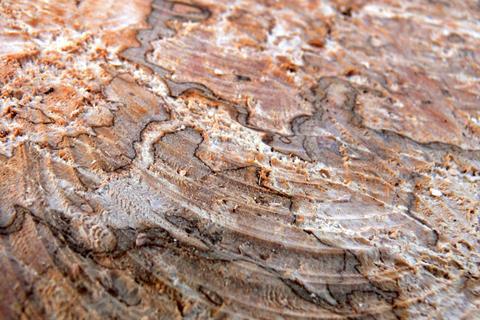The bacterium Pseudomonas syringae is a ubiquitous and devastating plant pathogen. The pathogen penetrates the plant via natural openings or injuries, infects it and causes considerable damage in agriculture. Amoebae are natural enemies of the bacterium.The amoeba Polysphondylium pallidum, for instance, is a single-celled organism that feeds on bacteria.
However, if food becomes scarce, the unicellular organisms aggregate to form multicellular structures that allow for the generation and dispersal of spores. While not directly involved in the infection process of the plant, the amoeba is an important predator that forces the bacterium to evolve highly effective defense mechanisms in order to survive in their presence.
An amoeba kills itself
The research team led by Pierre Stallforth, professor at the University of Jena and head of department at the Leibniz-HKI, has now identified a previously unknown defense mechanism of Pseudomonas syringae.
“We were able to show how the bacterium uses a chemical radar to recognize and eliminate the hostile amoebae. Interestingly, the amoebae themselves play a crucial role in their own demise,” says Shuaibing Zhang, first author of the study.
Pierre Stallforth adds: “Pseudomonas syringae produces syringafactins. These are chemical compounds that are harmless to the amoeba, they enable the bacterium to move faster. When the amoeba encounters this molecule, the organism modifies syringafactin’s chemical structure. The bacterium in turn has a special sensor protein - the Chemical Radar Regulator (CraR) – which recognizes these modified molecules. This enables the bacteria to detect the presence of amoebae, whereupon genes responsible for the production of toxic substances – the pyrofactins – are activated. The pyrofactins in turn kill amoebae and, interestingly, are derivatives of the modified syringafactins.”
Defense mechanism
The infectivity of the bacterium is also linked to the chemical radar system: P. syringae can only infect thale cress, Arabidopsis thaliana, a very common plant model organism, in the presence of amoebae if the bacterium has an active “chemical radar” and is therefore able to defend itself against the predator.
The study provides valuable insights into the complex interplay between microorganisms, protozoa, and higher plants. It also provides starting points for the discovery of new bioactive natural substances that can be useful to humans as drugs or in pest control.
Numerous fundings made this pioneering study possible under the direction of the Leibniz-HKI, including the Werner Siemens Foundation, the German Research Foundation within the Cluster of Excellence “Balance of the Microverse” and the ChemBioSys Collaborative Research Center. The states of Hessen and Thuringia also supported the project with funding from the European Regional Development Fund (EFRE).








No comments yet